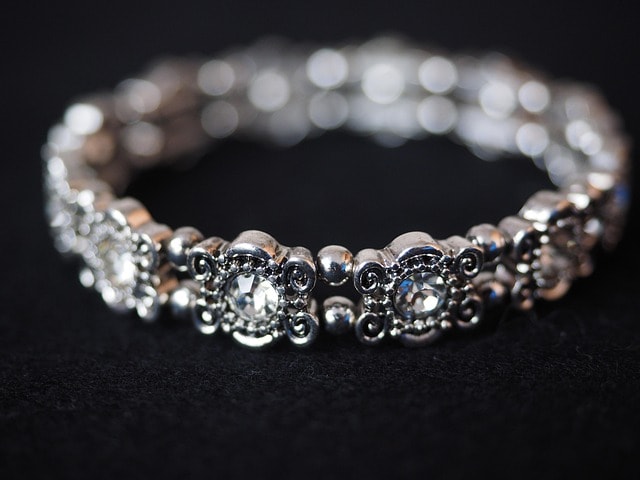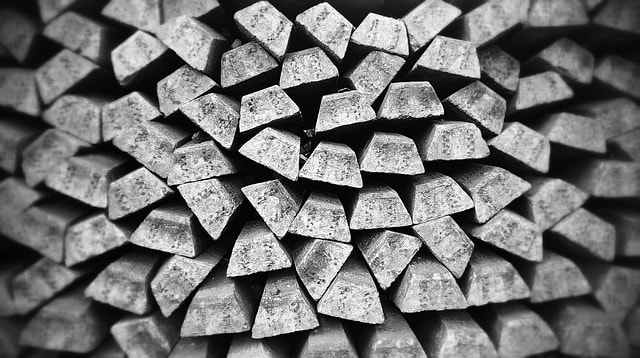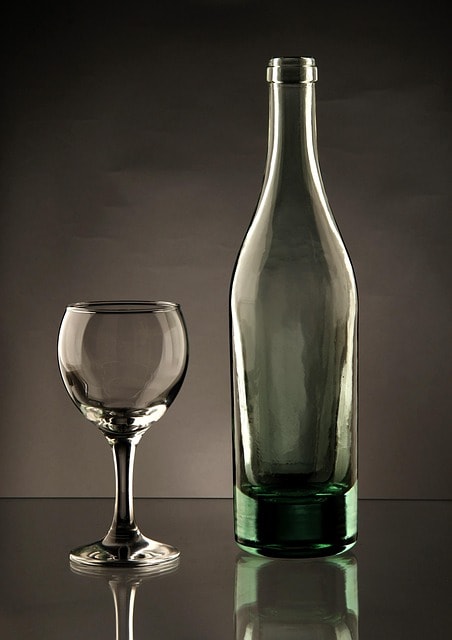What Is Rhodium and What Is It Used for?

Rhodium is one of the lesser-known precious metals, but because of its recent increase in trading price, it has grown in popularity.
If you’re hoping to learn more about this rare and highly desirable precious metal, you have come to the right place. In this article, we take a deeper dive into rhodium. And at the end, we’ll help you determine whether it’s worth adding to your investment portfolio.
What Is Rhodium?

Rhodium is one of the rarest precious metals on the planet and is a part of the platinum group metals (PGMs), which consist of platinum, palladium, rhodium, ruthenium, iridium, and osmium.
These valuable precious metals are often grouped together for their shared properties, such as corrosion resistance and a high melting point.
Rhodium has a silver-white appearance and is highly reflective, making it suitable for use in various industries. The rhodium market is considerably smaller because of low supply.
Where Does It Come from?
English chemist William Hyde Wollaston discovered rhodium in 1803, when he isolated the element from a fragment of ore that had come from South America.
The name rhodium comes from the Greek word “rhodon,” which means “rose”, and describes the red hue of the precious metal’s salts.
Rhodium is acquired primarily as a by product of nickel, platinum, and copper mining. It is most commonly found in the nickel or platinum ore deposits of South Africa, which accounts for most of the global rhodium production.
Smaller quantities of the rare metal are also mined in Russia, Canada, and Zimbabwe. Since rhodium is not mined directly, its availability and price are influenced quite heavily by the production of the other metals in the ore.
What Is Rhodium Used for? 4 Industrial Rhodium Uses
Rhodium’s unique properties make it a versatile and useful metal in a wide range of industries. From catalytic converters to jewelry, rhodium has a wide range of commercial applications. Here are four things this metal is used for:
1. Automotive Parts: Primary Use

Perhaps the most prominent place where rhodium is found is in catalytic converters. These automotive parts are designed to convert the nitrogen oxides (NOx) found in exhaust gases into harmless gases.
Catalytic converters are important because they reduce harmful emissions, promote good air quality, and reduce our carbon footprint.
Rhodium is the metal of choice for catalytic converters because of its incredible performance in converting exhaust gases into harmless gases. It is often used alongside palladium and platinum.
2. Badge Manufacturing
Have you ever noticed the luster of a police badge? That’s probably because of rhodium plating. The precious metal is the material of choice in the badge manufacturing industry because of its great reflective qualities and its durability.
It also doesn’t tarnish easily and resists scratches, giving badges longer lifespans. Rhodium is also hypoallergenic, making it ideal for accessories that come into contact with human skin.
3. Glass Production

Since rhodium can withstand high temperatures, it is used to create glass. It coats the inside of crucibles and thermocouples, and its high melting point and resistance to corrosion make it ideal for handling molten glass.
4. Rhodium-plated Jewelry
Rhodium also features in the jewelry industry to a lesser extent. It is desired for its great reflective qualities and can be added to white gold or silver using a process called plating, in which a thin layer of the metal is added to rings, bracelets, earrings, necklaces, charms, pendants, and other items.
5. A Catalyst in the Chemical Industry
Additionally, rhodium serves as a catalyst in many manufacturing processes. For example, it is used to make the raw materials needed for adhesives, coatings, explosives, and fertilizers. This typically accounts for around five to seven percent of global rhodium usage.
In addition to the uses mentioned above, rhodium can be used in:
- Mirrors,
- Electrical components,
- Optical instruments,
- Liquid crystal displays (LCD),
- Sputtering targets,
- Laboratory equipment, and
- Aircraft spark plug electrodes.
Why Is This Durable Metal So Expensive?
As mentioned already, rhodium is one of the rarest of all metals. This rarity makes it more valuable, contributing to the high price. In addition to its scarcity, the following factors also drive rhodium prices:
Rhodium Demand and Supply
Supply and demand play a crucial role in determining rhodium prices.
Around 85% of the world’s annual rhodium supply comes from South Africa. Only a minor portion of the world’s rhodium production comes from other parts of the world. Additionally, there is no dedicated rhodium mine. Instead, the metal is produced as a byproduct of nickel, platinum, and palladium mining.
There is no easy way to raise the production or supply of rhodium if demand rises because the supply is inelastic to demand.
This is mostly because rhodium is extremely rare in the Earth’s crust and because the extraction and mining of the metal is difficult. What’s more, the supply of rhodium may be impacted by geopolitical factors in Russia and South Africa, making it even more scarce and valuable.
Geopolitical Factors

Since rhodium can only be found in limited places, geopolitical factors can affect supply. Power outages in South Africa, for example, can affect mining operations, resulting in a lower output. This, in turn, makes rhodium more costly.
Environmental Regulations and Changes in Automotive Manufacturing
The demand for rhodium is highest in the auto industry, and changes in environmental regulations and the design of catalytic converters could influence rhodium prices.
For example, stricter regulations regarding nitrogen oxide emissions could increase the demand for rhodium, while the development of new catalytic converters could lessen the demand.
Is Rhodium Worth Investing in?

If you’re wondering whether rhodium is a good asset to add to your investment portfolio, then it’s important to know that there are both positive and negative aspects to owning rhodium.
Firstly, rhodium’s scarcity, industrial demand, especially in car manufacturing, and limited worldwide supply might lead to significant price increases.
Due to supply shortages and increased demand for catalytic converters, rhodium has outperformed other precious metals like gold, palladium, and platinum in recent years, hitting record highs.
Secondly, it is crucial to note that rhodium is also highly volatile. Short-term price fluctuations can be caused by geopolitical factors, changes in the auto industry, and more. Additionally, compared to gold or silver, there are fewer investment vehicles available for rhodium.
Most investors access it through rhodium bars, exchange-traded funds (ETFs), or investments in mining companies that deal specifically in platinum group metals.
If you are an experienced investor hoping to explore a new asset type, then rhodium is a good way to go. However, for the less experienced, it can be unpredictable. To get personalized advice on whether to invest in rhodium or not, you should speak to a financial advisor.
The Bottom Line
Rhodium is a precious metal that is used in a wide range of industries. As one of the platinum group metals, it is versatile and durable. However, before adding it to your investment portfolio, it is important to understand your personal risk tolerance and obtain advice from a financial advisor to prevent potential financial loss.
And, if you’re hoping to learn more about precious metals, please browse our website!
Frequently Asked Questions
1. What color is rhodium metal?
Since it is a member of the platinum family, rhodium is silvery-white in color. It is sought after for its bright and reflective appearance.
2. What are platinum group metals?
Platinum group metals, also known as the six PGMs, are a group of precious metals that share similar chemical and physical characteristics. They are typically found together in minerals in the Earth’s crust and are known for their corrosion resistance, high melting points, and catalytic properties.
3. How does rhodium compare to other precious metals?
Rhodium is one of the rarest precious metals on Earth. Unlike other malleable metals, it remains brittle, and its durability makes it better suited for industrial applications rather than collection, as is the case with other precious metals.
While it cannot be molded and shaped like gold and silver to make jewelry, it is used as a plating material, making the pieces more resilient and durable.
In the case of rhodium vs. platinum, rhodium tends to take a less prominent role in jewelry making because it is more brittle but can be used to plate white gold and silver jewelry.
4. Is rhodium scrap valuable?
Absolutely! Rhodium is a rare metal, and if you have any scrap metal lying around, the chances are that you can sell it for a profit. Be sure to contact a reputable scrap metal dealer if you intend to sell your rhodium.
5. Is there a high demand for rhodium?
Yes, rhodium is in high demand, particularly in the automotive industry, where it is used to make catalytic converters. This demand is influenced greatly by the increase in strict regulations governing emissions. However, rarity and the high cost of production make it challenging to meet global demands.
